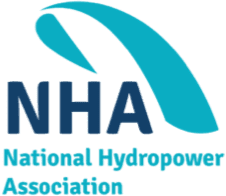- Show all
- Asset Management
- Buoy
- Canal
- Climate Change
- Controls
- Dam Safety
- Environmental Impact
- Fish and Aquatic Resources
- Future Grid
- Generator
- Governor
- Hydraulic Forecasting
- Hydraulic Optimization
- Hydrokinetic
- Intake Gates
- Markets
- Penstock
- Regulatory Process
- Renewable Integration
- Sediment Transport
- Shoreline and Riparian Resources
- Spillgates
- Tidal
- Transmission Services
- Turbine
- Water Management
- Water Resources
- Water Systems
- Wave
Marine Energy
A Tidal-Powered, Real Time Passive Acoustic Sentinel System for Marine Mammal Alerts to Navigation in the Puget Sound Area
Lead Companies
Pacific Northwest National Laboratory
Lead Researcher (s)
- Alicia Amerson
Technology Application
Marine Energy
Research Category
Environmental and Sustainability
Research Sub-Category
Environmental Impact
Status
ongoing
Completion Date
TBD
Marine Energy
Choose Your Own Collision Risk Adventure
Lead Companies
Pacific Northwest National Laboratory
Lead Researcher (s)
- Lysel Garavelli
- Lenaïg Hemery
This project aims to develop an interactive outreach tool for the marine energy community and the general public, highlighting the different stages of collision risk at various spatial scales and featuring fish.
Technology Application
Marine Energy
Research Category
Environmental and Sustainability
Research Sub-Category
Environmental Impact
Status
ongoing
Completion Date
TBD
Marine Energy
Co-Locating Wave Energy with an Integrated Multi-Trophic Aquaculture System
Lead Companies
Pacific Northwest National Laboratory
Lead Researcher (s)
- Lysel Garavelli
- Mikaela Freeman
- Molly Grear
This project will characterize the environment and wave resource around a proposed wave energy and aquaculture development site off Puerto Rico; evaluate the suitability of co-location; provide an initial assessment of the potential for wave energy to power an integrated multi-trophic aquaculture system; and develop a demonstration project plan and associated road map for implementation.
Technology Application
Marine Energy
Research Category
Environmental and Sustainability
Research Sub-Category
Environmental Impact
Status
ongoing
Completion Date
TBD
Conventional Hydro
Environmental Decision Support: Science-Based Tools for Hydropower Stakeholder Collaboration
Lead Companies
Oak Ridge National Laboratory (ORNL)
Lead Researcher (s)
- Esther Parish (parishes@ornl.gov)
Addressing environmental impacts while balancing multiple uses for water has been a longstanding challenge for hydropower, particularly when there is lack of access to information necessary to support decision-making. Therefore, ORNL has been working with a cross-section of hydropower stakeholders represented by members of the project’s Mission Advisory Board (MAB) and Science Advisory Board (SAB) to develop and refine an Environmental Decision Support (EDS) toolkit that can help interested users to prepare for Federal Energy Regulatory Commission (FERC) licensing negotiations by identifying what existing information and data are available to support environmental impact assessments, which issues have project nexus, and which environmental issues might require more discussion and/or additional research. The final EDS toolkit will include a science-based River Function Indicator (RFI) Questionnaire tool and user guide, a set of key river function and terminology definitions, the database of environmental metrics that was used to develop the list of 42 RFIs in 6 categories, and a retrospective analysis of environmental studies requested and implemented during 29 nonfederal hydropower licensing processes. The EDS toolkit will be made available to the public through DOE's HydroSource website to help stakeholders identify the key metrics of environmental sustainability for their hydropower projects so that they can work together to develop strategies that avoid, minimize, or mitigate impacts to the riverine ecosystem.
Technology Application
Conventional Hydro
Research Category
Environmental and Sustainability
Research Sub-Category
Environmental Impact
Status
ongoing
Completion Date
TBD
Conventional Hydro
Environmental, Economic and Social Trade-Offs of Hydropower Relicensing: A Case Study of the Yuba River Development Project
Lead Companies
University of California, Berkely
Lead Researcher (s)
- Joseph Rand
Technology Application
Conventional Hydro
Research Category
Regulatory Management Process
Research Sub-Category
Environmental Impact
Status
complete
Completion Date
2018
Marine Energy
Evaluating Potential for Impacts from Seal Collisions with Tidal Turbines
Lead Companies
Pacific Northwest National Laboratory
Lead Researcher (s)
- Andrea Copping
While no collisions between marine mammals and tidal turbines have been observed, regulators continue to have concerns about potential impacts. Addressing these concerns can improve project permitting timeframes and reduce costs to developers. This project investigated the risk to marine mammals, including the consequences to the animal of a collision and the likelihood of a collision happening. Specifically, project researchers estimated the biomechanical properties of the skin and underlying tissues (in addition to the morphology and mass) of harbor seals; modeled the mechanics and forces associated with collision and assessed the consequences to tissues and the general physiological state of the harbor seal struck by a tidal turbine blade; and utilized information on the behavior of harbor seals in tidal waters and around tidal turbines to determine the risk of collision with a turbine blade.
Technology Application
Marine Energy
Research Category
Environmental and Sustainability
Research Sub-Category
Environmental Impact
Status
complete
Completion Date
2017
Marine Energy
Intelligent Adaptable Monitoring Package for Marine Renewable Energy Projects
Lead Companies
Pacific Northwest National Laboratory
Lead Researcher (s)
- Shari Matzner
Pacific Northwest National Laboratory will support a technical evaluation of the Intelligent Adaptable Monitoring Package (iAMP) instrumentation package developed by the University of Washington. The evaluation will take place at Pacific Northwest National Laboratory's Marine Sciences Laboratory, where the instrumentation package will be deployed for an extended endurance test. During the endurance test, the performance will be evaluated using controlled, synthetic targets (drifting instrumented buoys) and naturally occurring marine biota.
Technology Application
Marine Energy
Research Category
Technology
Research Sub-Category
Environmental Impact
Status
ongoing
Completion Date
TBD
Marine Energy
Powering the Blue Economy Foundational R&D and Systems of Innovation
Lead Companies
NREL
Lead Researcher (s)
- Ben Maurer, ben.maurer@nrel.gov
- Senu Sirnivas, senu.sirnivas@nrel.gov
- Jenny Wiegele, jenny.wiegele@nrel.gov
To spur economic growth and revitalize the ocean, the U.S. Department of Energy’s (DOE’s) Water Power Technologies Office (WPTO) launched the Powering the Blue EconomyTM (PBE) initiative, which aims to foster long-term, sustainable growth of the blue economy by protecting the ocean and understanding and leveraging its immense power, learning the power needs of emerging coastal and maritime markets, and advancing marine renewable energy technologies. NREL is helping achieve PBE goals through early-stage research and development by investigating power needs for blue economy sectors, such as offshore marine aquaculture, underwater vehicle charging, ocean observation, desalination, and seawater mining. For example, NREL researchers are exploring the feasibility of using marine energy to provide power at sea and build resiliency in coastal communities, with a focus on disaster recovery. To this end, the team is researching designs for small-scale marine energy technologies.
Technology Application
Marine Energy
Research Category
Research Sub-Category
Environmental Impact, Fish and Aquatic Resources, Water Resources
Status
complete
Completion Date
2022
Marine Energy
Smart Node – A Highly Adaptable Passive Acoustic Receiver System
Lead Companies
Pacific Northwest National Laboratory
Lead Researcher (s)
- Daniel Deng
Technology Application
Marine Energy
Research Category
Environmental and Sustainability
Research Sub-Category
Environmental Impact
Status
ongoing
Completion Date
TBD
Don’t see your waterpower research?
Have questions about WaRP?
Contact Marla Barnes at: marla@hydro.org



